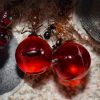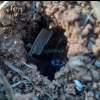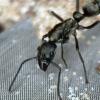Title pretty much says it all. I have a one year old Camponotus. sp. colony that keeps producing drones. It's a major bummer since they take up valuable resources. so far they have hatched 5 drones since february. the first 2 were killed the third one i rescued/released, the 4th one had its wings removed by the workers but has survived for months among them and they just hatched another drone... this seems extremely odd to me. any thoughts on why this is happening/how to prevent it?
- Formiculture.com
- Forums
- Gallery
- Members
- Member Map
- Chat























